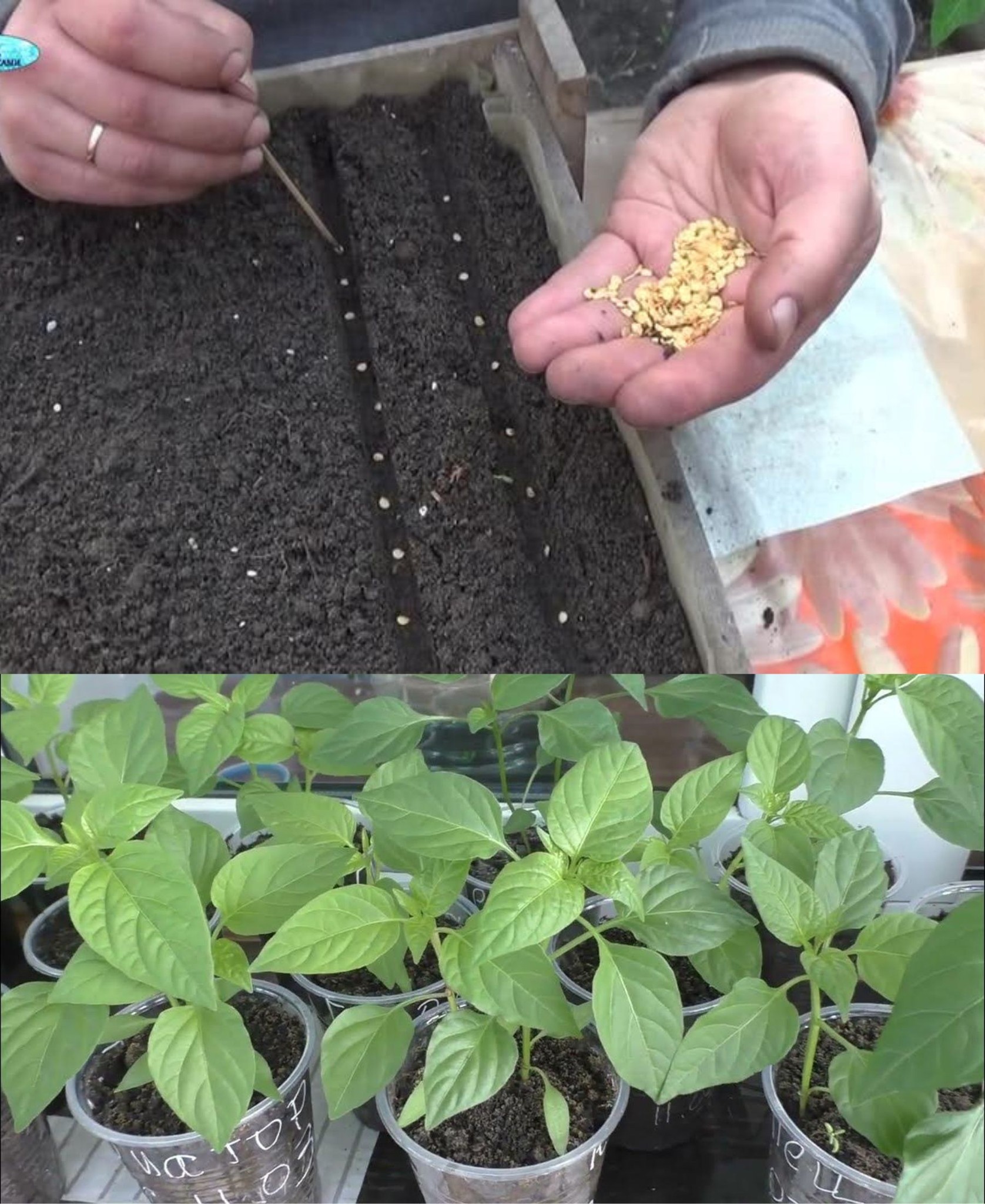
Common Mistakes When Sowing Peppers That Can Cost You Your Harvest
In today’s post, I’ll discuss common errors in sowing peppers that could significantly impact your yield, and I’ll share what conditions peppers generally dislike. This article was inspired by a request from my subscriber, Elena.
Peppers are notoriously slow to germinate, and sometimes they don’t germinate at all. The process from sowing to the emergence of the first shoots typically takes about 10 to 14 days, although this can vary based on seed quality, with some seeds taking even longer to sprout.
I have techniques for treating particularly stubborn seeds to encourage quicker germination, which I’ll share with you.
Here’s why your pepper seeds may not be sprouting:
- Poor Quality or Old Seeds: Always purchase seeds from reputable suppliers and check the expiry dates. If you collect your own seeds, choose only from healthy plants and store them in perforated paper bags for ventilation. (This is my preferred method).
- Incorrect Seed Selection: Make sure you select the right seeds for your growing conditions.
- Inappropriate Soil: Peppers thrive in light, loose, and breathable soil. I use a mix of 10 parts high-moor peat, 1 part vermicompost, and 1 part perlite, with a bit of river sand. This blend has worked well for me over the years.
Avoid using garden soil as it’s generally too heavy and can impede germination.
Mistakes that Can Ruin Your Pepper Crop
- Wrong Sowing Time: Sowing times vary by pepper variety. For instance, cube-shaped varieties might take 140-150 days to mature, while conical varieties take about 100-110 days. I start sowing in February since I’m in the middle Volga region; southern regions may start earlier.
- Feeding Seedlings Too Early: Newly germinated seedlings generally don’t need extra nutrients as they can draw what they need from the seed and soil. Wait at least two weeks after transplanting or until the appearance of 2-4 true leaves before feeding.
- Cross-contamination: Never sow hot and sweet peppers together, as the sweet varieties may end up tasting spicy.
- Incorrect Sowing Depth: Sow seeds about 0.5-1 centimeter deep. Seeds that are too shallow may dry out and fail to sprout, while those that are too deep may not emerge at all.
- Overwatering: After sowing, avoid overwatering as soggy soil can reduce oxygen availability and decrease germination rates. Excess moisture can also lead to seed rot and fungal diseases like damping-off.
- Ventilation and Temperature Control: If you cover your seeds, remember to ventilate periodically to prevent condensation. Maintain a germination temperature of 25-27 degrees Celsius. Lower temperatures can delay germination.
If seedlings become leggy, which is rare, you can bury them up to their cotyledon leaves when transplanting as long as the stem hasn’t hardened. This can encourage stronger roots.
Lighting: While I assume you’re aware of the importance of good lighting, adding supplemental lighting can be beneficial if possible.
Germinating seeds beforehand can be advantageous as it allows you to identify viable seeds early, saving space and effort.
By avoiding these common pitfalls, you can enhance your chances of nurturing healthy seedlings and achieving a bountiful pepper harvest. Don’t forget to subscribe for more gardening tips and tricks. Best of luck with your seedlings and upcoming gardening endeavors!
Share Article: